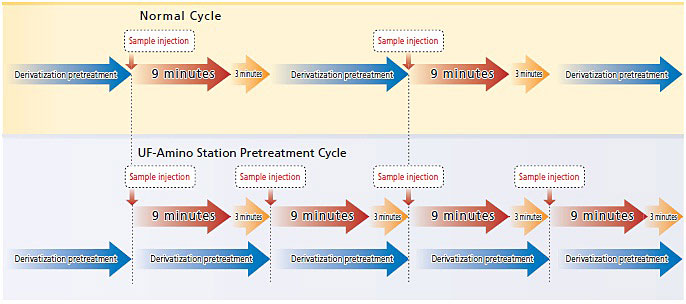UF-Amino Station - Features
LC/MS Ultra Fast Amino Acid Analysis System
Fast Simultaneous Analysis of 38 Amino Acid Components in Nine Minutes
Rapid separation combined with LC/MS detection results in the simultaneous analysis of 38 biogenic amino acid components in just nine minutes. The ability to analyze up to 96 samples in 24 hours ensures exceptional performance for multi-sample analysis.
The increased speed supports new applications, such as real-time amino acid composition analysis in culture fluid, that were difficult to handle using conventional techniques.
About 18 Times Faster
Biogenic amino acid analysis using a combination of ion-exchange chromatography and postcolumn derivatization requires over two hours to achieve multicomponent separation. In contrast, UF-Amino Station can analyze 38 biogenic amino acid components in just nine minutes. This analysis time is about 18 times shorter, enabling a significant improvement in throughput and productivity.
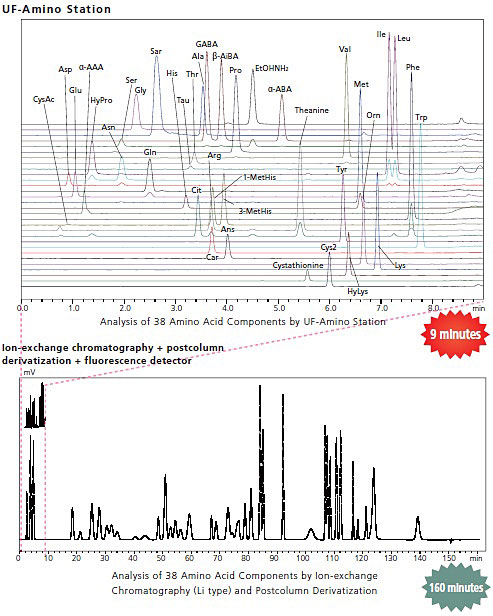
LC/MS Offers Superb Detection Selectivity
A method using precolumn derivatization and UV detection combined with reversed-phase column separation can be used to reduce analysis times. However, it may not achieve adequate separation and the reliability of the analysis results may be limited in cases with numerous target components, such as biogenic amino acids, or if the sample contains many impurities. By using an LC/MS instrument as the detector, UF-Amino Station permits highly reliable analysis even when analyzing a large number of target components or if the sample contains a complex matrix.
LC/MS Permits Qualification and Quantitation of Peaks that Cannot be Separated by HPLC
Since analysis by pre-column derivatization and UV detection lacks selectivity, quantitation can be adversely affected by inadequate separation on the column. As shown in the diagram below, commercially available skim milk powder can be difficult to analyze via pre-column derivatization using PTC and UV detection because of the difficulty in the separation of multiple amino acid components and impurities. UF-Amino Station utilizes LC/MS technology for quantitation by using particular mass to charge ratios for each amino acid.
By utilizing LC/MS the UF-Amino Station delivers the benefits of a highly selective detector, allowing for better analytical results.
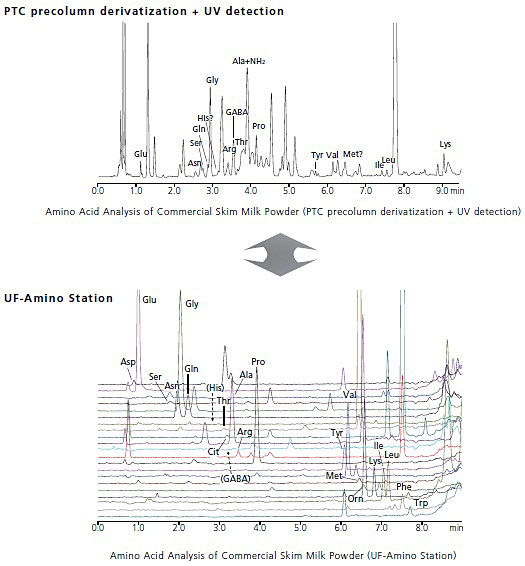
AmiNavi™ Software Simplifies Operation
AmiNavi software supports all operations from analysis setup to checking quantitation results. Simply follow the on-screen wizard to create analysis sequences, check analysis results, or print reports.
Analysis Operation
AmiNavi completely eliminates the need or time to create complex method files or sequence files. Simply install the column, the mobile phase, and the autosampler rinse solution on the system and then run AmiNavi. The software guides the user through the rest of the parameters in order to create an analytical sequence. Once completed, load the samples and reaction reagents as directed and allow the software to run so that it can sequentially analyze the samples. The system will automatically shut down after completing analysis in order to conserve both power and mobile phase.
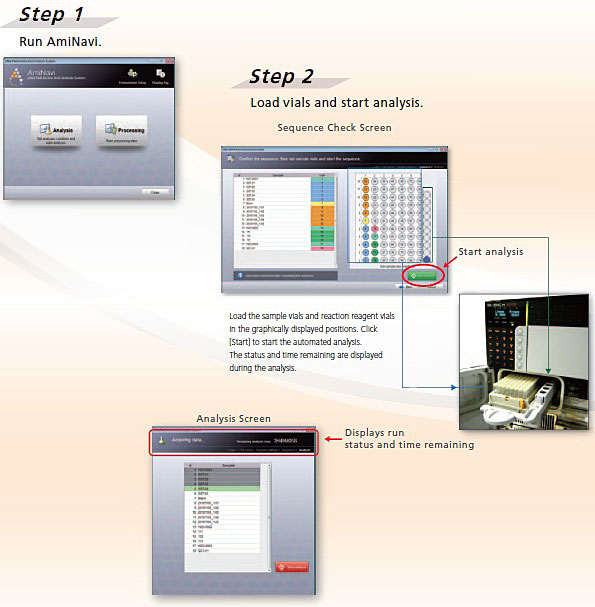
Checking the Analytical Results
AmiNavi displays the quantitation results when the analysis is complete. It automatically identifies standard sample peaks, creates the calibration curve, and performs quantitation of the sample solution. This makes it simple to observe the quantitation results for multiple samples without the need to perform any difficult or time-consuming analysis operations. The report template can be used to generate a quantitation results report with just one click.
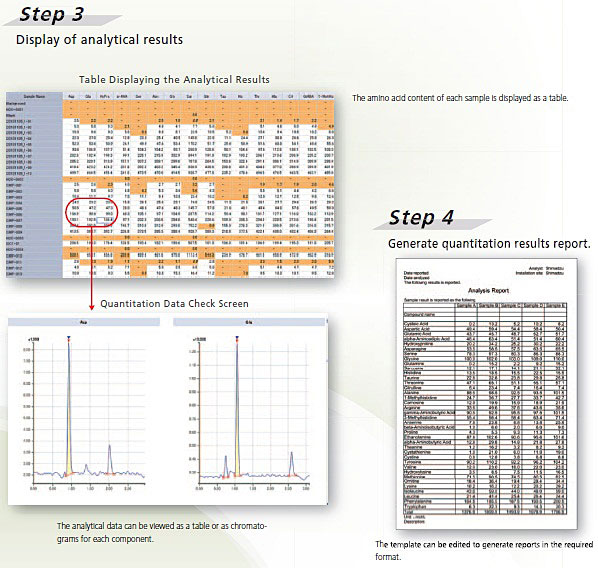
Automated Derivatization Improves Efficiency and Reliability
Derivatization by Automatic Pretreatment
The autosampler pretreatment functions are used to draw in the sample and reaction reagent and to mix them with the reaction solution.
The mixed sample is loaded into the heated reaction unit where it is heated to promote the derivatization reaction. The reacted sample is then introduced into the sample loop and injected.
The automated pretreatment process enhances the reproducibility of the derivatization and improves efficiency.

Analysis and Pretreatment in Parallel Improves Efficiency
When the sample solution that was derivatized by automatic pretreatment is injected into the column and analysis starts, the autosampler starts the derivatization of the next sample. While chromatographic analysis is being performed on the one sample, the next sample, derivatization reagent, and reaction solution are mixed and introduced into the reaction unit. This process eliminates time losses and improves analytical efficiency. In addition, the short analysis times and low mobile phase flow rate (0.3 mL/minute) reduce the mobile phase consumption. This reduces running costs and lowers the environmental impact.
